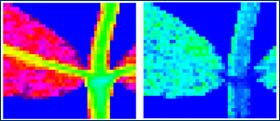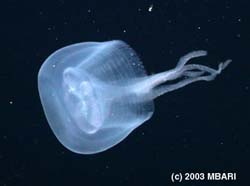Articles and reports from the Life Sciences and chemistry area deal with applied and basic research into modern biology, chemistry and human medicine.
Valuable information can be found on a range of life sciences fields including bacteriology, biochemistry, bionics, bioinformatics, biophysics, biotechnology, genetics, geobotany, human biology, marine biology, microbiology, molecular biology, cellular biology, zoology, bioinorganic chemistry, microchemistry and environmental chemistry.

A membrane protein, NCX1, that transports sodium and calcium into and out of cells, may determine the frequency as well as strength of the heartbeat, researchers at UT Southwestern Medical Center at Dallas report.
The findings are published in today’s issue of Nature.
“This calcium transporter really is an important key to understanding how the heart is regulated,” said Dr. Donald Hilgemann, professor of physiology and senior author of the study. “At every beat, calcium in hear

Study with transgenic mice could lead to omega-3-containing meats, dairy products
Researchers from Massachusetts General Hospital (MGH) have found that tissues from mice transgenic for a gene usually found in the c.elegans roundworm contain omega-3 fatty acids, consumption of which has been shown to protect against heart disease. Usually mammals cannot produce omega-3s from the more abundant omega-6 fatty acids, which do not have the health benefits of omega-3s. The finding, published

The possibility of using the Earth’s abundant supply of water as a cheap source of hydrogen is a step closer thanks to researchers from Imperial College London. By mimicking the method plants use to split water, researchers say that a highly energy efficient way to form cheap supplies of hydrogen fuel may be possible in the future.
Reporting online in the journal Science today Imperial researchers reveal the fine detail of the protein complex that drives photosynthesis – the process tha

A Purdue University researcher has successfully engineered plants that may not only lead to the production of anti-carcinogenic nutritional supplements, but also may be used to remove excess selenium from agricultural fields.
By introducing a gene that makes plants tolerate selenium, David Salt, professor of plant molecular physiology, has developed plants capable of building up in their tissues unusually high levels of a selenium compound. His interest in selenium stems in part from recent

Wart-like bumps of stinging cells cover the feeding arms and bell of a newly described deep-sea jelly, published by MBARI biologists in this month’s issue of the Journal of the Marine Biological Association of the United Kingdom. This softball-sized, translucent jelly moves through the water like a shooting star, trailing four fleshy oral arms–but no tentacles–behind it. This and other unique features resulted in the jelly’s categorization as a new genus and species.
The MBARI researcher

Researchers at the European Molecular Biology Laboratory (EMBL) and the University of Rome “La Sapienza” have found a way to restore some of the “regenerative” ability of tissues, which happens naturally in animals at the embryonic stage of development, but is lost shortly after birth. The scientists’ work, published this week in PNAS, gives new insight into how stem cells can be mobilized across the body, and how they take on specialized functions in tissue.
“Many labs have reported th